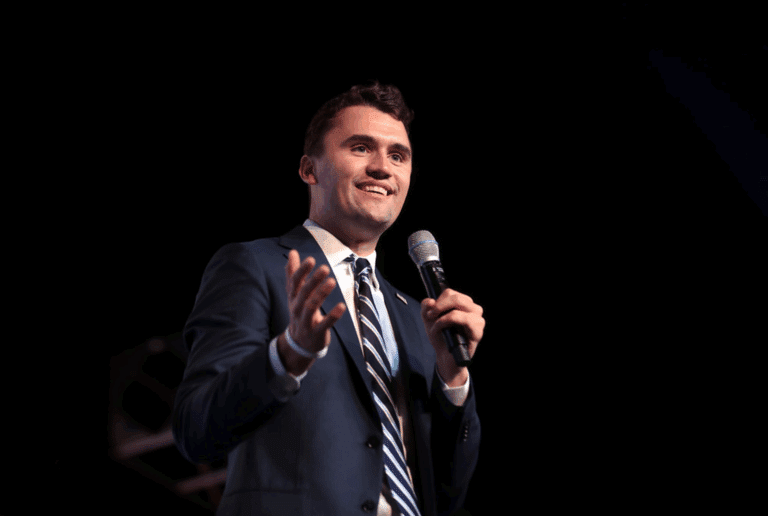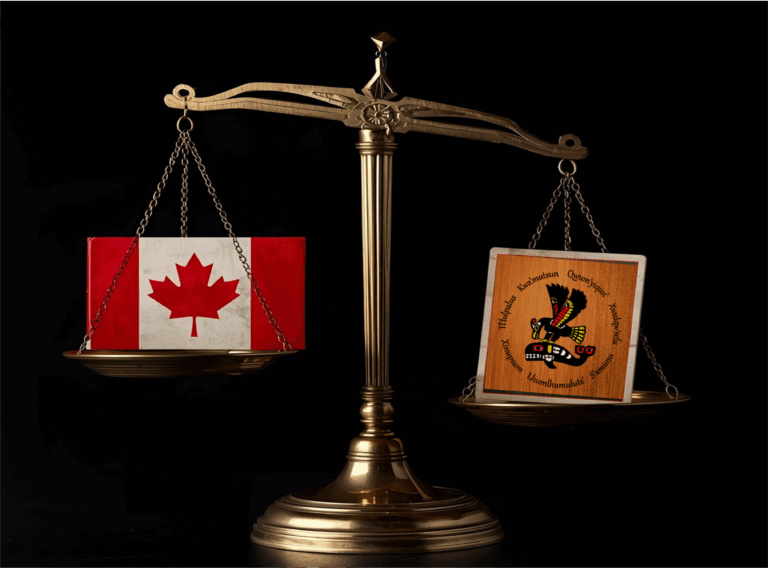Pierre Poilievre’s Axe the (carbon) Tax campaign is a spectacular success. But the Conservative Party of Canada needs its own plan to reduce greenhouse gas emissions from fossil fuels. Paradoxically, it’s a fossil fuel that provides much of the answer.
Canada’s rich endowment of natural gas resources offers an immense opportunity to reduce global carbon dioxide (CO2) emissions while also helping to rescue the Liberal-government-ravaged Canadian economy by exporting liquefied natural gas (LNG) to China, Japan, South Korea and the other coal-dependent Asia-Pacific countries. Switching from coal to natural gas for producing electricity and generating heat for buildings and industrial processes can typically reduce CO2 emissions by 50 percent for the same unit of output, while all-but eliminating the toxic compounds and lung-clogging particulates emitted from burning coal that shorten the lives of millions living in smog-stricken Asian cities.
More natural gas is urgently needed, since countries throughout Asia – especially China and India – are currently adding even more coal-burning power plants to meet rapidly growing electricity demand. The benefits of fuel-switching are not speculation, but a proven result: the United States’ pronounced switch starting in the mid-2000s from coal to natural gas for electricity materially reduced that country’s CO2 emissions (see accompanying graph), nearly equalling the entire European Union’s emissions cuts, as I wrote about in this previous column.

A study by respected consulting firm Wood Mackenzie, released in late 2022, determined the following:
- “Canada is well-positioned geographically…Western Canadian LNG is much closer to Asia relative to US Gulf Coast LNG, which needs to be shipped through the Panama Canal to get to Asia”;
- “LNG from Canada would be cost-competitive for northeast Asian importers…due to its relatively low shipping and liquefaction costs”;
- “LNG from Canada has lower emissions intensity than LNG coming from many other global LNG exporters”;
- “Asia will not be able to produce enough natural gas domestically to meet its escalating demand, therefore Canadian LNG is a compelling alternative: With its high environmental standards and stewardship, Canada would be a great partner to fill the LNG demand gap in Asia”; and
- “If Canada aggressively ramps up its LNG exports…the emissions displaced from Canadian LNG would total 5.5 [gigatons of CO2 equivalent] from 2022 to 2050 or 181 [megatons of CO2 equivalent] on average per year, which is equivalent to removing all Canadian cars from the road.”
These impressive benefits – not to mention the opportunity to create tens of thousands of well-paying jobs in our country and provide long-term returns to investors, among them millions of pension-dependent retirees – were recognized long ago by the energy industry, Western provincial premiers and former prime minister Stephen Harper. And for a time it indeed seemed that Canada was on the cusp of an LNG boom. By 2010, there were more than 20 LNG projects in the works in B.C., representing hundreds of billions in total investment. These included Exxon Mobil’s $25-billion West Coast Canada project, Chinese-owned CNOOC’s $36-billion Aurora project, Malaysian firm Petronas’s $36 billion Pacific NorthWest project, and the Shell-led $43 billion LNG Canada project at Kitimat.
Aside from the jobs created and the wealth generated for the participating companies, B.C.’s annual natural gas royalties are forecast to double. Benefits for First Nations include significant employment and business opportunities, such as HaiSea Marine’s 50 percent interest in a $500 million contract.
But through a decade of trying to navigate Canada’s increasingly obstructive and Byzantine regulatory process, project proponents dropped out one by one. Today LNG Canada is the only one of those major projects left standing. (Two much smaller LNG projects, Woodfibre LNG in Howe Sound at Squamish, and Cedar LNG just a few kilometres from the LNG Canada project, are also proceeding, and one other large project proposed by the Nisga’a First Nation is making regulatory progress.) LNG Canada succeeded only because South African project leader Andy Calitz, backed by the enthusiasm of the Haisla Nation which saw the immense potential to create a self-sustaining, wealth-generating economy for its people, refused to give up.
After five years of construction, the LNG Canada liquefaction facility and loading terminal are nearing completion, with the first LNG ship scheduled to sail to China in 2025 (possibly even this year). The Kitimat plant itself is just one component of Canada’s first LNG export project. TC Energy Corp.’s (formerly TransCanada Pipelines) $15 billion, recently completed Coastal GasLink pipeline will carry the required natural gas from the northeastern B.C. gas fields to the Kitimat terminal. And additional billions of dollars have been invested in drilling natural gas wells, proving up the immense reserves needed to feed the LNG facility for decades to come, and constructing field production systems.

The economic benefits are myriad. Aside from the jobs created and the wealth generated for the participating companies, B.C.’s annual natural gas royalties are forecast to double from $700 million in 2024 to $1.4 billion in 2027. Benefits for First Nations include significant employment and business opportunities, such as HaiSea Marine’s 50 percent interest in a $500 million contract.
And that’s just LNG Canada’s Phase 1, which will produce 14 million tonnes per annum (mtpa) of LNG, or approximately 1.8 billion cubic feet (bcf) per day. With that one project coming on-stream, about 10 percent of Canada’s total natural gas production will be exported to international markets, earning premium prices. Construction of Phase 2 is scheduled to begin in 2026 and will double the facility’s output, with first delivery scheduled for 2032. A report from Canada Action estimates that completion of both phases will reduce CO2 emissions in Asian countries as much as would removing 18 million cars from Canadian roads. That is a far more efficient and realistic way of reducing emissions than the Trudeau government’s current scheme to force everyone into electric vehicles within a decade.

A major barrier for LNG project sponsors has been Canadian regulators’ fixation on a project’s domestic emissions – which come mainly from producing the energy needed to operate the liquefaction and storage process and loading facility. These emissions are miniscule compared to the enormous emissions reductions when natural gas is used instead of coal in consuming countries. But in their zeal to force Canada to “net zero” emissions, government authorities initially tried to veto LNG Canada generating its electricity and compression power using some of the natural gas that will be already piped to the site, insisting instead upon hydroelectric power. This seriously delayed the project due to the need for B.C. Hydro to first build a new dam to supply the required power, along with a new, $3 billion transmission line that has not even begun its environmental review process.
Regulators finally waived their objection so the project could be finished, and it will initially use natural gas for power. But the same objection is now being raised with respect to another major LNG venture proposed in the same region. The Ksi Lisims LNG project would utilize a floating liquefaction and loading facility docked at lands owned by the Nisga’a First Nation north of Prince Rupert. Its natural gas would be supplied through an already-approved but never-built pipeline planned for one of the cancelled LNG projects. The $10 billion venture would have approximately two-thirds the capacity of LNG Canada Phase 1. The facility would be powered by hydroelectricity.

Ksi Lisims sounds like a great addition to Canada’s modest LNG lineup, one that British Columbians should applaud. Instead, the proponents have been assailed by objections over the greenhouse gas emissions from the facility and the natural gas production process, and concurrently the B.C. Wilderness Committee is calling on the province’s NDP government to veto any further LNG development. None of these zealots acknowledge the vastly greater reduction of greenhouse gas emissions that will be achieved as consuming countries switch to natural gas.
Prior to the December 2018 UN Climate Change Conference in Katowice, Poland, Canada’s Conservative Party urged leaders of their nation’s delegation to propose that the use of imported natural gas to displace coal and thereby reduce emissions in one country should count towards the exporting country’s emissions reduction targets. But this made far too much sense for our Prime Minister and his team of anti-fossil-fuel eco-zealots. A new federal government that encourages LNG projects might well see a return of those other big sponsors that were driven off.
‘Communist’ China’s private sector generates ‘approximately 60% of China’s GDP, 70% of its innovative capacity, 80% of urban employment and 90% of new jobs.’ By those measures, the private sector in ostensibly free and democratic Canada has been reduced to barely half the relative size of the private sector in authoritarian China.
And that brings us back to Pierre Poilievre and the need for a Conservative alternative to Trudeau’s carbon tax. LNG export would be not only vastly superior in reducing emissions, it would also create tens of billions of dollars in economic benefits for a beleaguered Canadian private sector. It is beyond high time. A Macdonald-Laurier Institute report, Estimating the True Size of Government in Canada, concludes that Canada’s private sector has shrunk to just 36 percent of the nation’s GDP. That’s right – Canada’s public sector now represents nearly two-thirds of the Canadian economy, if one includes in that measure the vast amounts governments spend on tax credits and other tax-related expenditures, plus the economic impacts of regulating the pricing or outputs of private industries. This is appalling.

Even more incomprehensible is a research report from the Harvard Kennedy School noting that “Communist” China’s private sector generates “approximately 60% of China’s GDP, 70% of its innovative capacity, 80% of urban employment and 90% of new jobs.” By those measures, the private sector in ostensibly free and democratic Canada, with its allegedly market-based economy, has been reduced to barely half the relative size of the private sector in authoritarian China.
It is clear that for Canada, getting out of the way of privately-driven growth in LNG exports would be a vastly superior environmental alternative to Trudeau’s economically destructive and politically divisive carbon tax, while also helping to reverse the decline of what was once a proud, thriving nation into an indebted, unproductive, government-dominated basket case.
Gwyn Morgan is a retired business leader who was a director of five global corporations.
Source of main image: Shutterstock.





